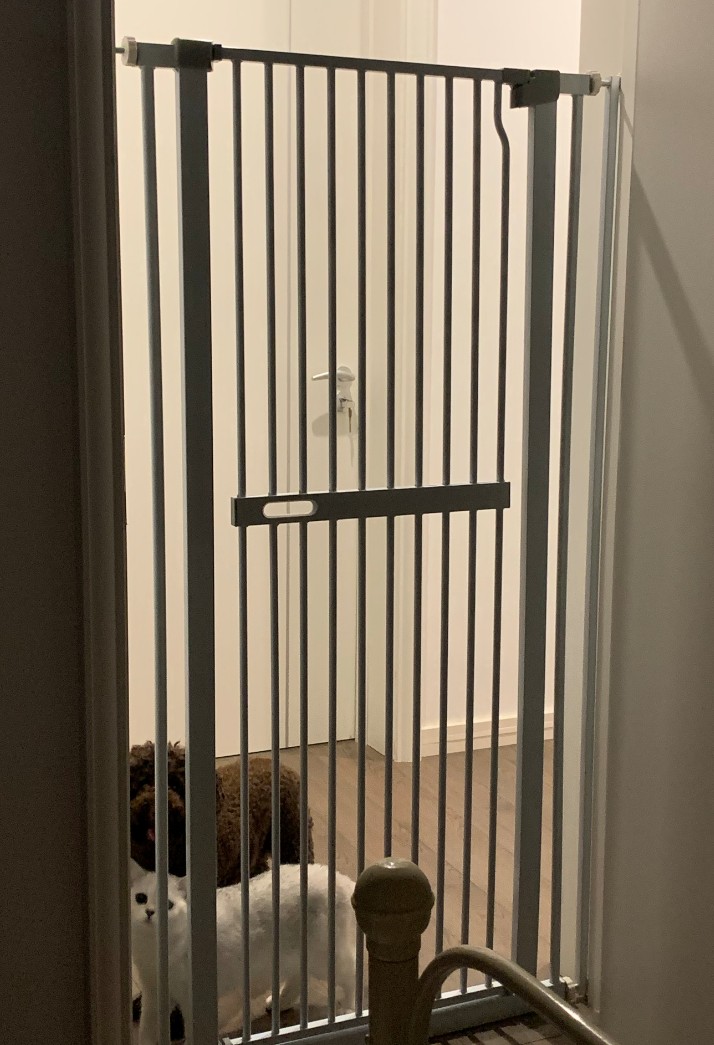As pet owners, we often seek ways to create safe and designated spaces within our homes for our beloved animals. Pet gates emerge as a popular solution, especially for managing dogs and ensuring cats have their own sanctuary. However, a common question arises, particularly among cat owners: Can Cats Jump Over Pet Gates? This article will delve into this query, providing insights and recommendations to help you choose the most effective pet gate for your feline companion.
Understanding the jumping prowess of cats is crucial when selecting a pet gate. Renowned for their agility, cats are indeed capable jumpers. Most cats can effortlessly clear a 40-inch high barrier. This inherent ability means that standard pet gates designed primarily for dogs might not be sufficient to contain a determined cat.
For short-legged cat breeds, a taller gate is generally advisable. A 55-inch cat gate can provide a reliable barrier, deterring most short-legged breeds from jumping over.
When it comes to breeds like American Shorthairs, Sphynx, Maine Coons, and Ragdolls, known for their moderate jumping capabilities, both 55-inch and 61-inch gates are viable options. While a 55-inch gate might suffice, opting for a 61-inch gate offers an extra layer of security and is often the preferred choice to minimize the chances of your cat jumping over.
For more agile breeds such as Domestic Shorthairs, British Shorthairs, Garfield (Exotic Shorthair), British Blues, Siamese, and Devon Rex, a 61-inch or even a 72-inch gate should be considered. For these breeds, a 72-inch gate is highly recommended to effectively prevent jumping, given their enhanced athleticism.
It’s important to remember that these are breed-specific guidelines. Individual cat characteristics play a significant role. Factors like your cat’s body length, weight, age, and activity level, as well as whether they are primarily indoor or outdoor cats, should all be taken into account when deciding on the appropriate gate height. Observing your cat’s typical jumping behavior can also provide valuable clues.
Even if your cat is capable of jumping over the pet gate, it doesn’t necessarily mean the gate is ineffective. Many customers have reported that while their cats can jump over the gate, the barrier still serves as a psychological deterrent. Cats may choose to play in other areas rather than consistently jumping over the gate, effectively limiting their access in the long run.
For dog owners, different gate heights are generally recommended. A 40-inch pet gate is typically suitable for large dogs. This height provides a visual and physical barrier that discourages most large breeds from attempting to jump. The intelligence and trainability of dogs also contribute to the effectiveness of gates, as they are more likely to understand and respect boundaries.
For medium and small dogs, a 30-inch safety gate is usually sufficient. This height effectively contains most medium and small breeds with average jumping abilities. However, for exceptionally athletic breeds like Border Collies known for their jumping prowess, a 40-inch gate, similar to those used for large dogs, might be a better choice. The positive experiences of over 1200 customers using 40-inch gates for medium and small dogs highlight their versatility and effectiveness.
Furthermore, a 30-inch tall pet gate with a cat door offers a practical solution for households with both cats and dogs. This type of gate allows cats to pass through freely to access their litter boxes or feeding areas while effectively containing dogs. This ensures harmonious coexistence and provides each pet with their designated space.
In conclusion, while cats are indeed capable jumpers and can jump over lower pet gates, selecting the appropriate height based on breed and individual cat characteristics is key. Taller gates, such as 55-inch, 61-inch, or 72-inch options, are recommended for cats, especially agile breeds. Even if a cat can technically jump over a gate, it can still serve as a valuable deterrent. For dogs, 40-inch and 30-inch gates are generally effective for large and medium/small breeds respectively. Ultimately, choosing the right pet gate contributes to a safer, more organized, and pet-friendly home environment.


